Ayodhya, located in the northern Indian state of Uttar Pradesh, is a city steeped in history, mythology, and spirituality. Revered by Hindus as the birthplace of Lord Rama, Ayodhya holds immense cultural and religious significance. The city is dotted with temples, ghats, and historical sites that attract pilgrims and tourists alike. In this comprehensive guide, we will explore the best tourist places in Ayodhya, offering a rich tapestry of the city’s heritage and spirituality.
Ram Janmabhoomi: The Sacred Birthplace
- Timings: Open 24 hours
- Location: Near Sarayu River, Ayodhya
- Entry Fee: Free
- How to Reach: Well-connected by road; nearest railway station is Ayodhya Junction.
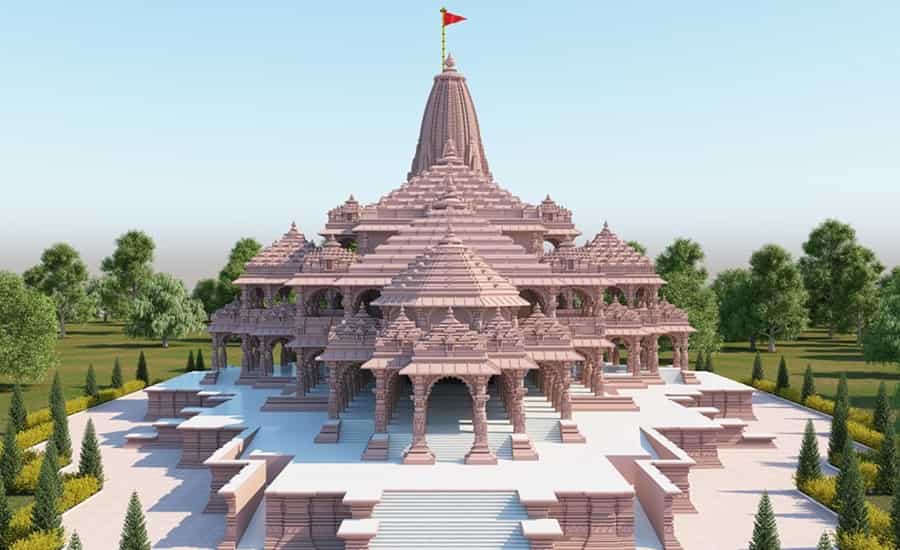
Ram Janmabhoomi, the sacred birthplace of Lord Rama, stands as an embodiment of religious fervor and cultural heritage. The Grand Ram Temple, a symbol of devotion and unity, graces this hallowed ground. According to Hindu tradition, this site by the Sarayu River is where Lord Rama, the seventh avatar of Lord Vishnu, was born. Witness the grandeur of the temple and delve into the spiritual atmosphere that surrounds this significant location. The groundbreaking ceremony held by Prime Minister Narendra Modi in 2020 marked a historic moment in the ongoing narrative of the Ram Temple’s construction.
Hanuman Garhi: A Hilltop Haven
- Timings: 5:00 AM to 10:00 PM
- Location: Hanuman Garhi, Ayodhya
- Entry Fee: Free
- How to Reach: Accessible by stairs; about 2 km from Ayodhya Junction.
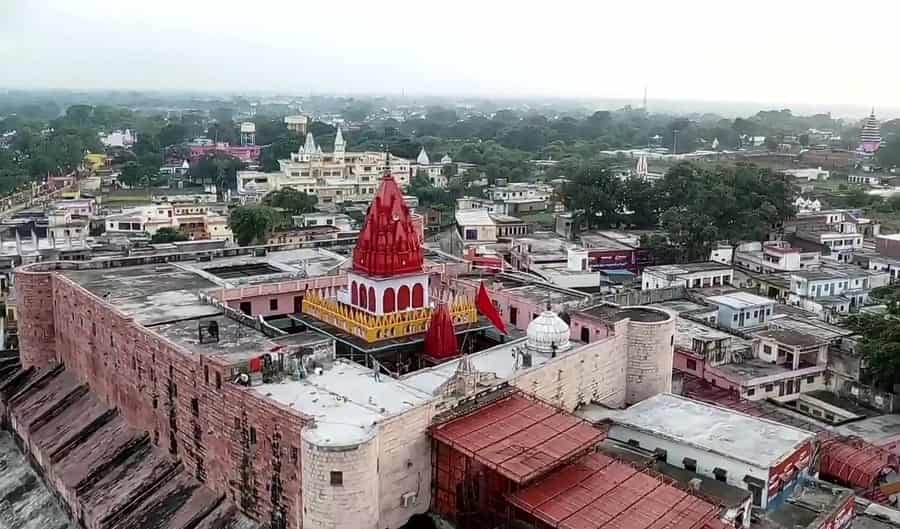
Hanuman Garhi, a temple dedicated to Lord Hanuman, sits majestically atop a hill, offering breathtaking panoramic views of Ayodhya. The temple’s 76-staircase route is not just a means of ascent; it’s a work of art. As you reach the top, a 6-inch-tall Hanuman statue welcomes you amid a picturesque landscape. Pilgrims flock here annually to celebrate the birth of Lord Ram and Hanuman on Ram Navami and Hanuman Jayanti. Feel the spiritual aura and experience the protective embrace that Hanuman is believed to extend over Ayodhya.
Kanak Bhawan: The Golden Palace
- Timings: 5:00 AM to 12:00 PM, 4:00 PM to 9:00 PM
- Location: Tulsi Nagar, Ayodhya
- Entry Fee: Free
- How to Reach: Approximately 2 km from Ram Janmabhoomi.
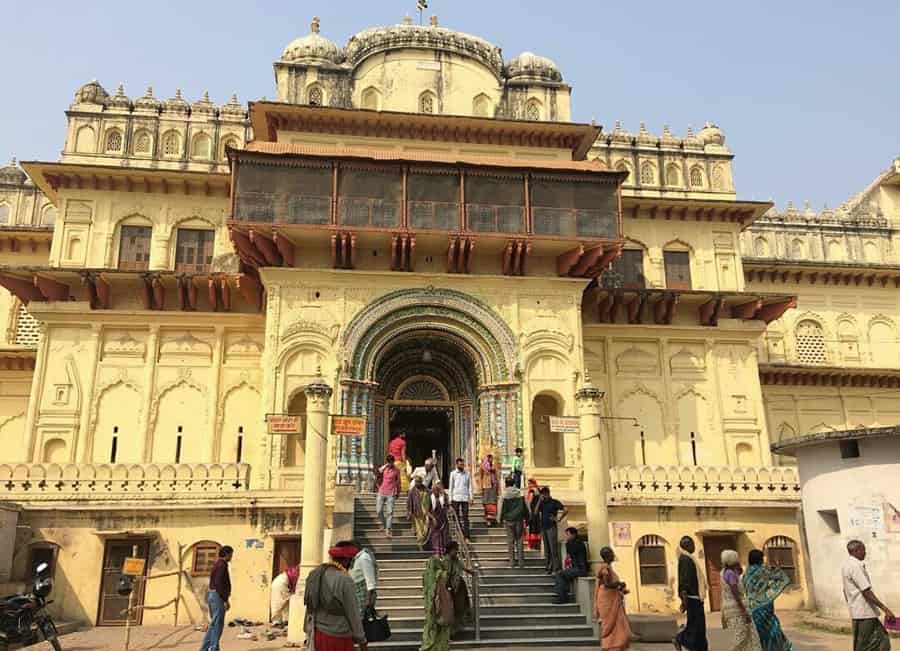
Situated in Tulsi Nagar, near Ram Janmabhoomi, Kanak Bhawan, also known as the Golden Palace, is a testament to devotion and intricate architecture. Built in 1891, this temple is dedicated to Lord Rama and his consort, Goddess Sita. The sanctum sanctorum, crowned with three golden statues under a silver dome, symbolizes the golden palace gifted by Kaikeyi to commemorate Rama and Sita’s marriage. The trust currently managing the temple ensures the preservation of its Bundela-style architecture and its place in Ayodhya’s religious landscape.
- Suggested Tour: Ram Mandir Tour Packages
Nageshwarnath Temple: A Sacred Haven
- Timings: 6:00 AM to 12:00 PM, 4:00 PM to 9:00 PM
- Location: Near Theri Bazaar, Ayodhya
- Entry Fee: Free
- How to Reach: Walking distance from Hanuman Garhi.
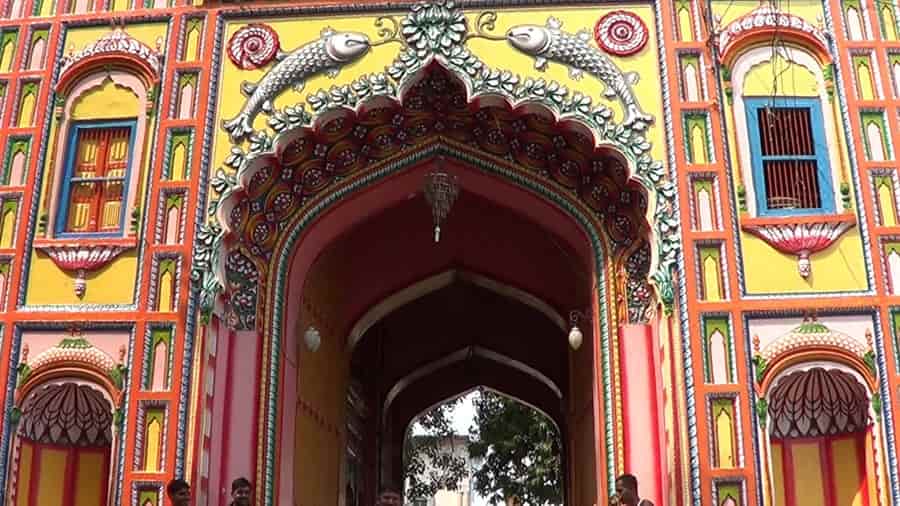
Nageshwarnath Temple, dedicated to Lord Nageshwarnath, stands next to Theri Bazaar in Ayodhya, embodying centuries of history and devotion. Traditionally believed to have been established by Kush, Lord Rama’s son, this temple attracts numerous devotees during Mahashivaratri and Pradosh Vrat. Despite renovations in 1750, the temple maintains its spiritual aura and historical charm. Legend has it that Kush built this Shaiva shrine to commemorate a divine encounter with a Shiva devotee named Naga Kanya.
Gulab Bari: Garden of Roses
- Timings: 9:00 AM to 6:00 PM
- Location: Vaidehi Nagar, Ayodhya
- Entry Fee: INR 20 (approx.)
- How to Reach: Close to Ram Janmabhoomi; accessible by road.
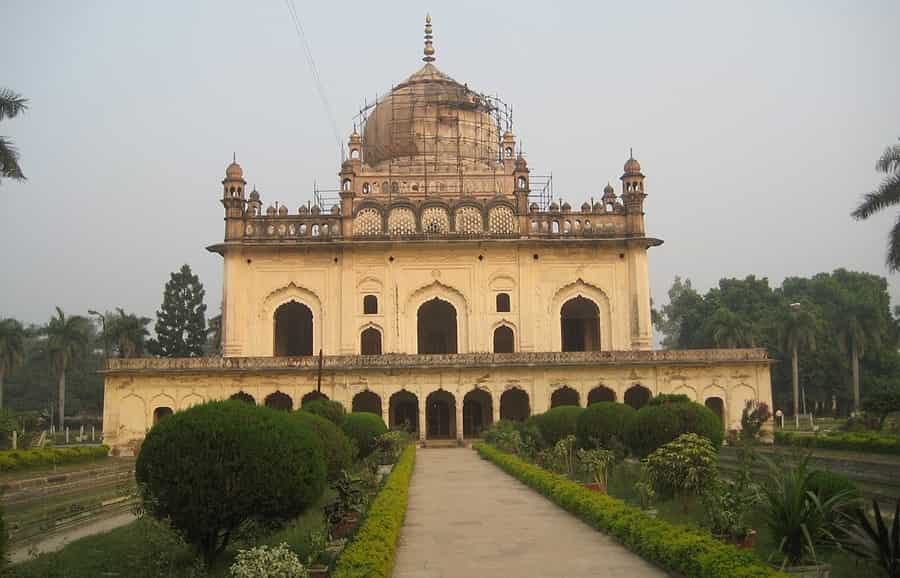
Gulab Bari, also known as the Garden of Roses, graces the Vaidehi Nagar neighborhood with its enchanting blend of Mughal architecture and lush greenery. Housing the tomb of Nawab Shuja-ud-Daula, the third Nawab of Faizabad, this 18th-century monument is a national treasure. Protected under the Ancient Monuments and Archaeological Sites and Remains Act, Gulab Bari features intricate tombs, rose gardens, and fountains. Explore the historical charm while imagining the Mughal era’s cultural and architectural splendor.
Treta Ke Thakur Temple: Echoes of an Ancient Era
- Timings: Open only on Ekadashi
- Location: Near Naya Ghat, Ayodhya
- Entry Fee: Free
- How to Reach: Limited access; inquire locally.
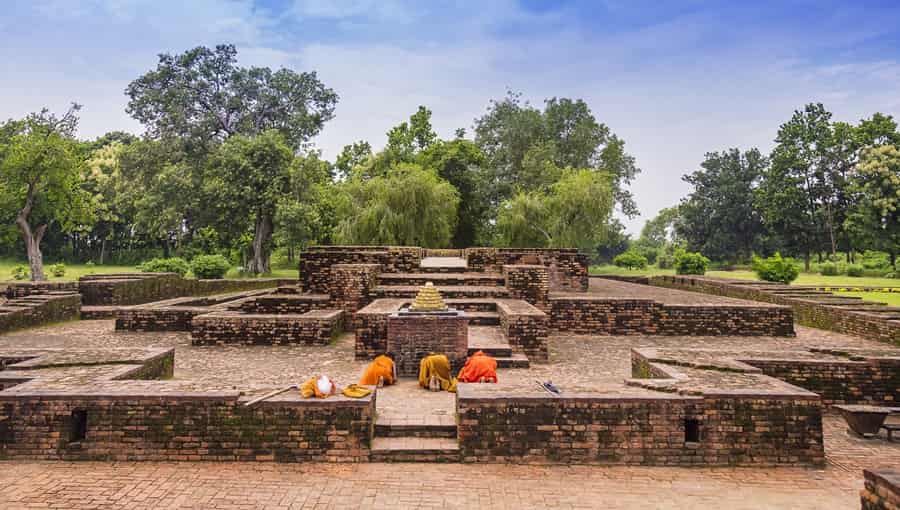
Treta Ke Thakur Temple, near Naya Ghat, takes visitors on a journey through time with its ancient sculptures and historical significance. Believed to be built 300 years ago by Kullu, the region’s king, the temple stands on the same ground where Lord Rama performed the Ashwamedha Yagna. Open to the public only once a year on Ekadashi, this temple offers a glimpse into Ayodhya’s rich mythology and cultural heritage. Ahilyabai Holkar’s contributions during the 1700s further enhance the temple’s historical tapestry.
Choti Chawni: A Tapestry of Heritage Caves
- Timings: 9:00 AM to 6:00 PM
- Location: Valmiki Bhawan, Ayodhya
- Entry Fee: Free
- How to Reach: Near Ram Janmabhoomi; easily reachable by road.
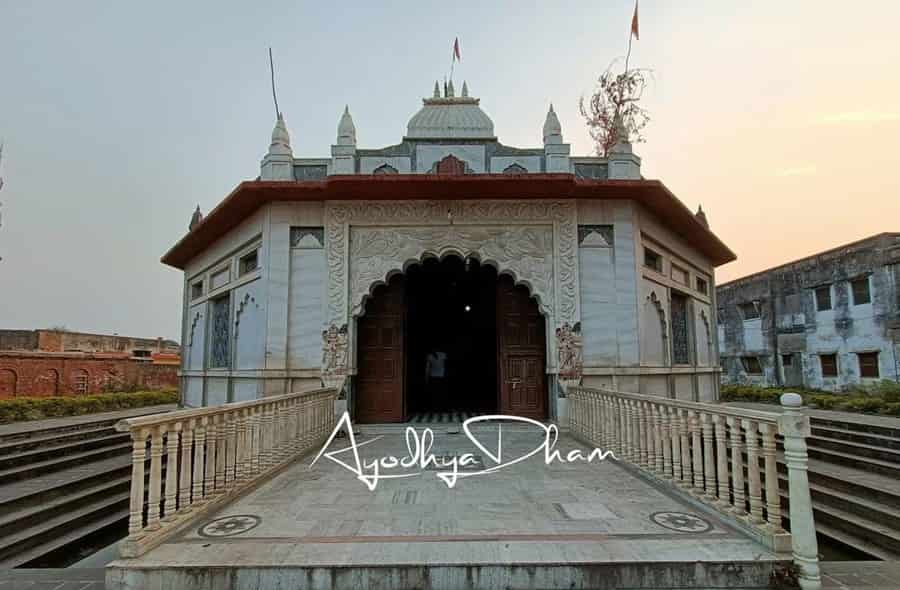
Choti Chawni, also known as Valmiki Bhawan, stands as a magnificent architectural marvel with its 34 heritage caves. Divided into Buddhist, Hindu, and Jain sections, this site showcases the intricate beauty of ancient Indian civilizations. The Kailasha Temple within the caves adds to the artistic brilliance, creating a harmonious blend of cultural influences. Despite the wear and tear of time, Choti Chawni remains a testament to the architectural prowess and cultural diversity of ancient Ayodhya.
Sita Ki Rasoi: A Sacred Kitchen
- Timings: 6:00 AM to 8:00 PM
- Location: Near Ram Janmabhoomi, Ayodhya
- Entry Fee: Free
- How to Reach: Walking distance from Ram Janmabhoomi.
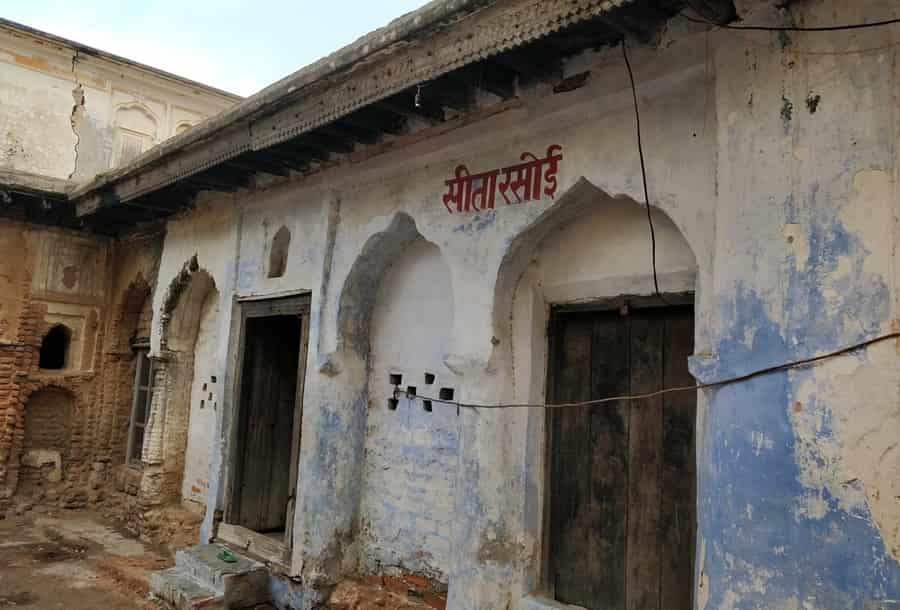
Sita Ki Rasoi, nestled near Ram Janmabhoomi, is not just a temple but a testament to the cultural and culinary heritage associated with Goddess Sita. Believed to be an ancient kitchen used by Sita, the temple houses exhibits and idols that depict the holy family of Lord Rama. The sacred kitchen, a basement structure, is one of the two kitchens in India bearing Sita’s name. As visitors explore this unique site, they delve into the religious traditions and cultural nuances linked to Sita’s revered role.
Tulsi Smarak Bhawan: Legacy of Goswami Tulsidas
- Timings: 8:00 AM to 8:00 PM
- Location: Eastern end of National Highway, Ayodhya
- Entry Fee: Free
- How to Reach: Easily accessible by road.
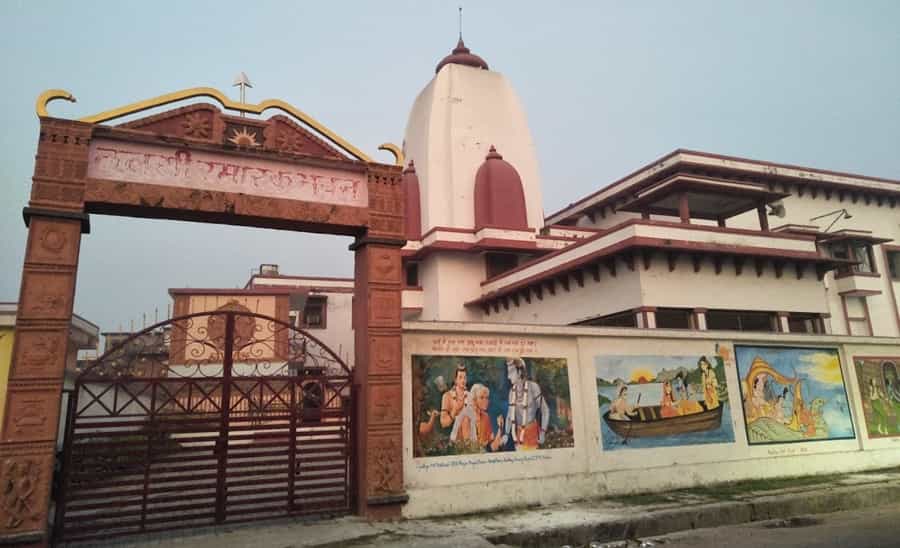
Tulsi Smarak Bhawan, constructed to honor the saint-poet Goswami Tulsidas, stands as a cultural hub and research center. Located on the eastern end of the National Highway, this smarak boasts a rich repository of literature related to Ayodhya’s cultural and spiritual heritage. The Ayodhya Research Sansthan within the premises focuses on studying and adding meaning to Ayodhya’s literary, cultural, and spiritual knowledge. With daily recitations of Ramkatha and exhibitions of Ramayana art and craft, Tulsi Smarak Bhawan invites visitors to immerse themselves in the legacy of Lord Sri Ram.
Bahu Begum ka Makbara: Taj Mahal of the East
- Timings: 6:00 AM to 6:00 PM
- Location: Maqbara Road, Faizabad
- Entry Fee: INR 25 (approx.)
- How to Reach: Around 7 km from Ayodhya; well-connected by road.
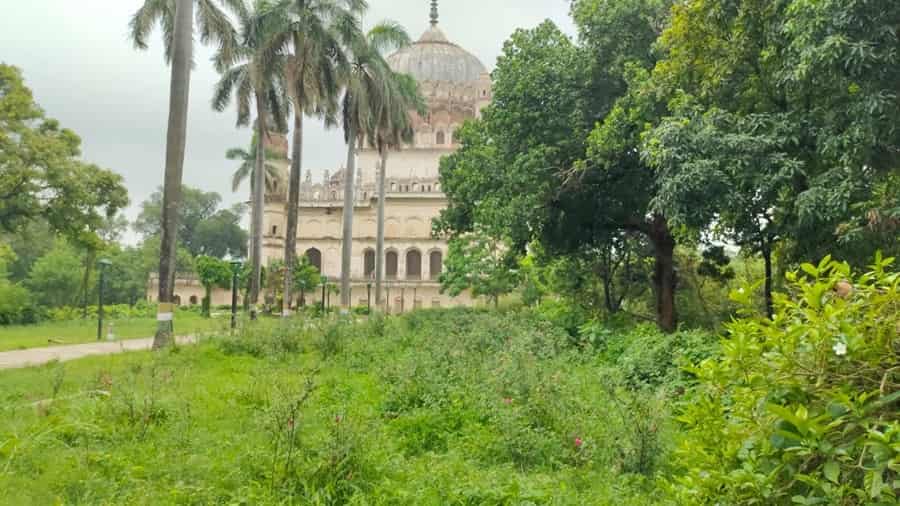
Bahu Begum ka Makbara, situated on Maqbara Road in Faizabad, stands tall as the “Taj Mahal of the East” due to its symmetrical design and architectural brilliance. Built in memory of Begum Unmatuzzohra Bano, the wife of Nawab Suja-ud-Daula, this mausoleum is a visual delight. With three domes, intricately designed interiors, and exquisitely painted walls and ceilings, Bahu Begum ka Makbara reflects the grandeur of the bygone era. The Archaeological Survey of India protects this site, making it a must-visit for those seeking historical opulence.
Raja Mandir: Legends by the River
- Timings: 7:00 AM to 8:00 PM
- Location: On the banks of the river Ghaggar, Ayodhya
- Entry Fee: Free
- How to Reach: Located near Ayodhya Junction; accessible by road.
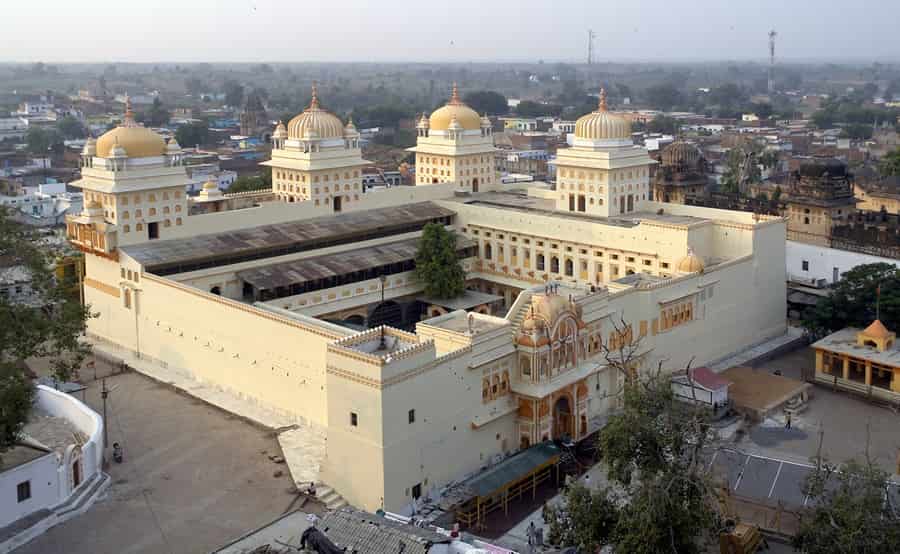
Raja Mandir, located on the banks of the river Ghaggar, is a temple steeped in mythical legends. Home to sculpted idols of various Hindu deities, this temple showcases the brilliance of Hindu architectural design. Once famed for its connection with Lord Sri Ram, the temple is now a captivating shrine with sculptures that depict various deities. With its stunning riverside location, Raja Mandir provides a serene atmosphere for visitors to connect with spirituality and immerse themselves in the stories etched in its walls.
Moti Mahal: The Pearl Palace
- Timings: 9:00 AM to 5:00 PM
- Location: Faizabad
- Entry Fee: Free
- How to Reach: Around 7 km from Ayodhya; accessible by road.
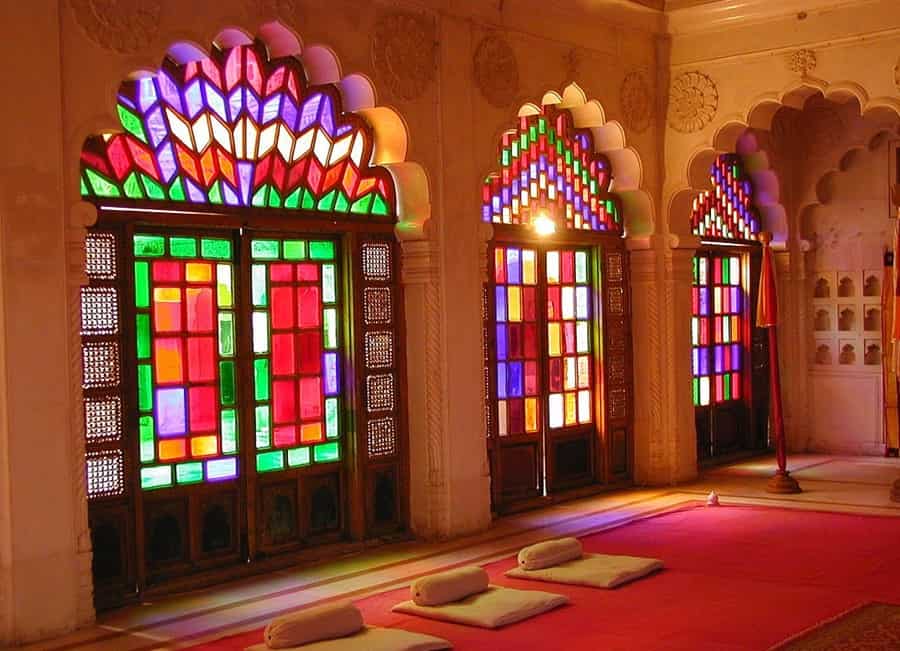
Moti Mahal, a historical monument in Faizabad, colloquially known as the “Pearl Palace,” stands as an architectural gem. Showcasing the Mughal architectural style, Moti Mahal boasts intricate designs that transport visitors to a bygone era. Beyond its aesthetic appeal, Moti Mahal holds cultural and historical significance, narrating tales of the region’s past. As visitors explore its corridors and chambers, they are immersed in the grandeur of the Mughal era, appreciating the delicate craftsmanship that adorns every inch of this regal structure.
Dashrath Bhavan: Ancient Abode of the King
- Timings: Open during events
- Location: Ayodhya
- Entry Fee: Varies with events
- How to Reach: Central location; well-connected by road.
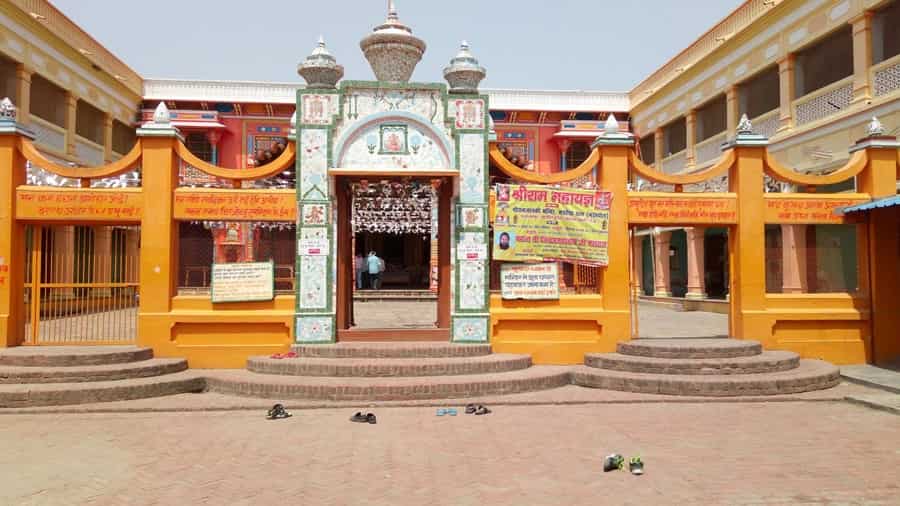
Dashrath Bhavan, believed to be the ancient house of King Dashrath, welcomes visitors with a decorated entrance that sets the tone for its religious and historical significance. The palace complex hosts temples dedicated to Lord Ram, further enhancing its spiritual aura. As visitors traverse its corridors and courtyards, they can feel the echoes of the ancient times when King Dashrath ruled over Ayodhya. Dashrath Bhavan remains a site where religious events and cultural celebrations contribute to the preservation of Ayodhya’s rich heritage.
Ram Ki Paidi: A Riverside Pilgrimage
- Timings: Open 24 hours
- Location: On the bank of River Saryu, Ayodhya
- Entry Fee: Free
- How to Reach: Central location; well-connected by road.
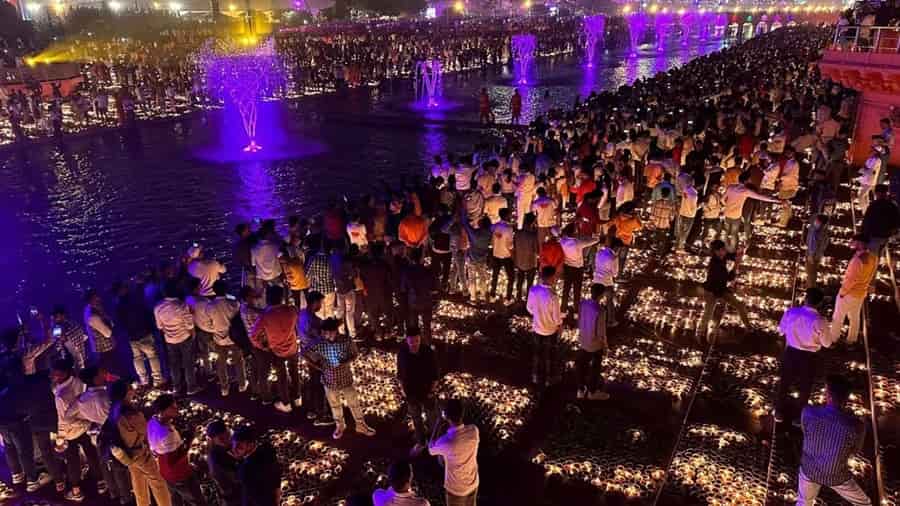
Ram Ki Paidi, a series of ghats on the bank of River Saryu, offers pilgrims and devotees an opportunity to take a holy bath in the sacred waters. The annual Deepotsav event, a grand spectacle of lights and celebrations, draws thousands to the riverfront. As the ghats come alive with the glow of lamps and the sound of devotional hymns, Ram Ki Paidi becomes a symbolic space where spirituality converges with the natural beauty of the river. The scenic views and religious fervor make this riverfront a must-visit for those seeking a profound connection with Ayodhya’s spiritual heritage.
Ram Katha Park: A Cultural Haven
- Timings: 6:00 AM to 8:00 PM
- Location: Ayodhya
- Entry Fee: Free
- How to Reach: Central location; well-connected by road.
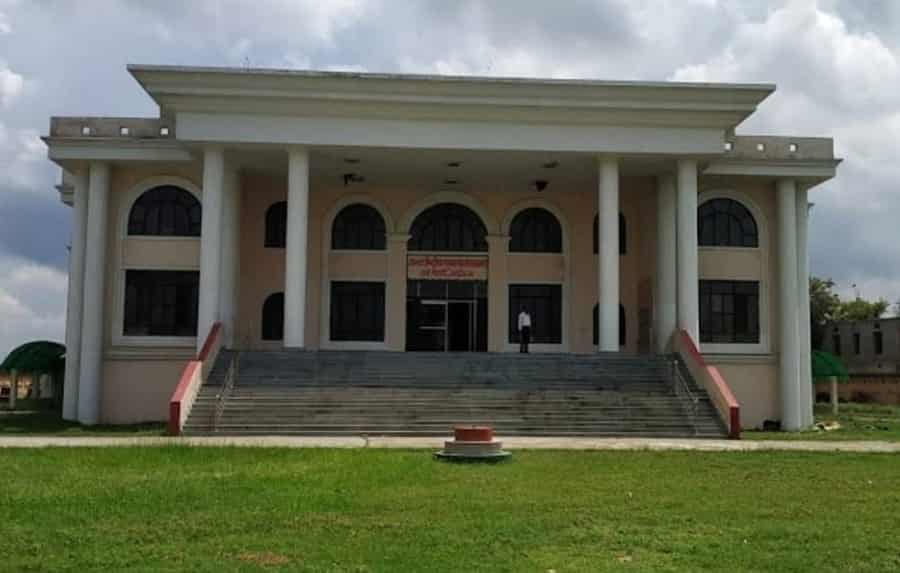
Ram Katha Park, designed to alleviate pressure on sacred sites, has evolved into a cultural haven with its spacious and well-maintained environment. The open-air theatre within the park becomes a stage for various cultural and religious events, attracting artists and enthusiasts alike. The park’s design encourages a harmonious blend of nature and spirituality, offering visitors a tranquil space to connect with Ayodhya’s cultural richness. Whether attending performances or simply enjoying the peaceful surroundings, Ram Katha Park stands as a testament to Ayodhya’s commitment to preserving its spiritual and artistic legacy.
Conclusion
In conclusion, Ayodhya is a city that seamlessly blends history, spirituality, and cultural richness. Whether you’re a history enthusiast, a spiritual seeker, or a traveler in search of new experiences, Ayodhya welcomes you with open arms. The diverse array of attractions, coupled with the warm hospitality of the locals, makes Ayodhya a must-visit destination for anyone looking to explore India’s cultural tapestry.
FAQs
Q: Can I visit Ayodhya if I’m not religious?
A: Absolutely! Ayodhya’s rich history, architecture, and cultural experiences make it an appealing destination for all types of travelers.
Q: Are there vegetarian options in Ayodhya’s cuisine?
A: Yes, Ayodhya’s cuisine predominantly offers vegetarian delights, reflecting the city’s cultural and religious influences.
Q: Is Ayodhya safe for solo travelers?
A: Ayodhya is generally considered safe for solo travelers. However, it’s always advisable to take standard safety precautions and be aware of your surroundings.
Q: What is the significance of Ram Navami in Ayodhya?
A: Ram Navami is celebrated with grandeur in Ayodhya, marking the birth anniversary of Lord Rama. The city comes alive with processions, rituals, and cultural events.
Q: Can I explore Ayodhya on foot?
A: Yes, Ayodhya’s compact size makes it convenient for exploring on foot. Many attractions are within walking distance, providing a leisurely and immersive experience.
Also Read:

 Call
Call WhatsApp
WhatsApp Enquiry
Enquiry